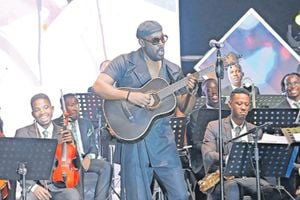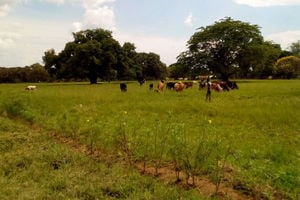
Mr Charles Onyango-Obbo
On a sojourn to Kampala a few days ago, I was travelling with a fellow jazzophile when we saw a billboard advertising an “Orchestra in the City” event, featuring Maurice Kirya with the Kampala Jazz Orchestra performing at the Uganda Golf Club.
Kirya, I knew his material and had last watched him live at a show at the grounds of the Nairobi National Museum, where a bunch of Ugandan expatriates working in the Kenyan capital cheered him wildly. He came over to chew the cud.The two-year-old Kampala Jazz Orchestra I hadn’t heard of before, nor listened to their work. This was a sin in the Jazz Book, and penance had to be made.
A few hours later we had snagged our tickets, and on the evening of September 28, our company rolled up the Golf Club for the event organised by House of Jazz. I was silently sore at the ticket prices, but we were plied with drinks, snacks, wine, and an Asian fusion dinner, all on the ticket tab, and my frostiness melted away.I was both surprised and unsurprised that a curiously lively but rutted city like Kampala would have a jazz orchestra. I was surprised because the decay kills the spirit that gives birth to a big band, but unsurprised because jazz as a genre originated as a result of the African-American people’s cultural and musical expression during slavery and horrific oppression in America.
The ensemble of 18 musicians, led by band conductor and Makerere University lecturer Polycarp Kyagulanyi, delivered. Expressing a globalist worldview, they drew a lot of their offerings from Frank Sinatra. When Kyagulanyi said it was Africa’s only jazz orchestra, I was instinctively doubtful, but in a patriotic relapse, I decided not to fact-check him (even for this column).We went there for the music, but that was the icing on the cake. The proceeds from the concert were to support conservation work to maintain the golf club’s survival as the last green belt in Kampala.
As the good people of the Daily Monitor reported: “The golf course is the largest green space in Kampala. However, beneath it lies a sewer line that transports sewage, garbage and other forms of waste from Makerere University, Wandegeya, Mulago Hill, Mawanda Road and in Kamwokya, and Kololo on Acacia Avenue to the Bugolobi sewage treatment facility.
“The sewer line has, however, been abused by locals, who throw everything they can into it, including dead bodies…Without immediate intervention, the sewer line below the golf course could become another Kiteezi (the garbage mountain that collapsed on the outskirts of Kampala in August killing dozens of people) waiting to happen.”
With trees being felled, and office and apartment complexes being built in Nakasero, Kololo, Makerere, and Mulago hills where previously single houses stood, several times more sewage is being fed into the line than planned. The golf club itself has a complicated history. Once seen as a sanctuary of the wealthy and powerful of Kampala, in colonial times its course was an open “apartheid” wall and health barrier, separating the European colonial elite and Asians from the Africans, particularly following the early 20th Century plague which killed nearly 2 per cent of the population in the areas of Kampala where black Ugandans lived.
However, the colonial bureaucrats were cleverer than ours. They also tucked the sewerage infrastructure under the golf course, turning it into a dual-use facility, and hoping that way to keep away the buildings that are now suffocating it.
So here we are today. The course is the last ecological frontline, perhaps appropriately, happening with the democratisation of golf and the tanning of the game (the majority of players are indigenous Ugandans). When the methane, hydrogen sulfide, ammonia, and other gases that have formed in the pipes erupt and set off a river of sewer, Kampala will be so stunk up and some of its water so poisoned, it would become unliveable. President Yoweri Museveni would never come anywhere near State House Nakasero. The capital would probably have to be moved.The show came to an end.
Kyagulanyi called the orchestra to take a bow. Talented singer Rebecca Gitta was nowhere to be seen. Perhaps without realising the social import of his remark, Kyagulanyi excused her absence and said she probably left to catch the last boda boda to her aboard. The audience stood, clapped, and unlike Gitta, headed for their fancy rides home.
Still, these people on different sides of the fence shared a common experience. On a nifty night, as they left the 11th hole where the concert was held, their noses picked up the peril – a foul fermented sewer smell. It would have been impossible to imagine in 1908 when the Uganda Golf Club was founded, that 116 years later, the very life of the capital would depend on its course.
Mr Obbo is a journalist, writer, and curator of the “Wall of Great Africans”. Twitter@cobbo3




